Red fort

The Red Fort Complex was built as the palace fort of Shahjahanabad – the new capital of the fifth Mughal Emperor of India, Shah Jahan. Named for its massive enclosing walls of red sandstone, it is adjacent to an older fort, the Salimgarh, built by Islam Shah Suri in 1546, with which it forms the Red Fort Complex.
The private apartments consist of a row of pavilions connected by a continuous water channel, known as the Nahr-i-Behisht (Stream of Paradise). The Red Fort is considered to represent the zenith of Mughal creativity which, under the Shah Jahan, was brought to a new level of refinement. The planning of the palace is based on Islamic prototypes, but each pavilion reveals architectural elements typical of Mughal building, reflecting a fusion of Persian, Timurid and Hindu traditions The Red Fort’s innovative planning and architectural style, including the garden design, strongly influenced later buildings and gardens in Rajasthan, Delhi, Agra and further afield.
The planning and design of the Red Fort represents a culmination of architectural development initiated in 1526 AD by the first Mughal Emperor and brought to a splendid refinement by Shah Jahan with a fusion of traditions: Islamic, Persian, Timurid and Hindu. The innovative planning arrangements and architectural style of building components as well as garden design developed in the Red Fort strongly influenced later buildings and gardens in Rajasthan, Delhi, Agra and further afield. The Red Fort has been the setting for events which have had a critical impact on its geo-cultural region.

How old is Red Fort
The Red sandstone walls of the massive Red Fort (Lal Qila) rise 33-m above the clamour of Old Delhi as a reminder of the magnificent power and pomp of the Mughal emperors. The walls, built in 1638, were designed to keep out invaders, now they mainly keep out the noise and confusion of the city.
Who built Moti Masjid in Red Fort
Mughal emperor Aurangzeb
The Moti Masjid ( lit. ‘Pearl mosque’) is a 17th-century historical mosque, not open for worship, inside the Red Fort complex in North Delhi, India. It was built by Mughal emperor Aurangzeb, damaged during the Siege of Delhi, and subsequently restored by the British.
Queen of red fort
The Mumtaz Mahal, a jewel nestled within the Red Fort, whispers tales of a queen’s elegance and a king’s devotion. Named after the beloved wife of Shah Jahan, this architectural marvel stands as a testament to their enduring love.
5 facts about red fort
- It Was Originally White! …
- A Monument Commissioned by Shah Jahan. …
- Named ‘Qila-e-Mubarak’ …
- The Red Fort role in the 1857 Rebellion. …
- Two Majestic Gates with Rich History. …
- Rang Mahal: A Hidden Gem Inside. …
- It Took 10 Years to Build. …
- The Kohinoor Diamond Adorned Its Walls.
Akshardham temple
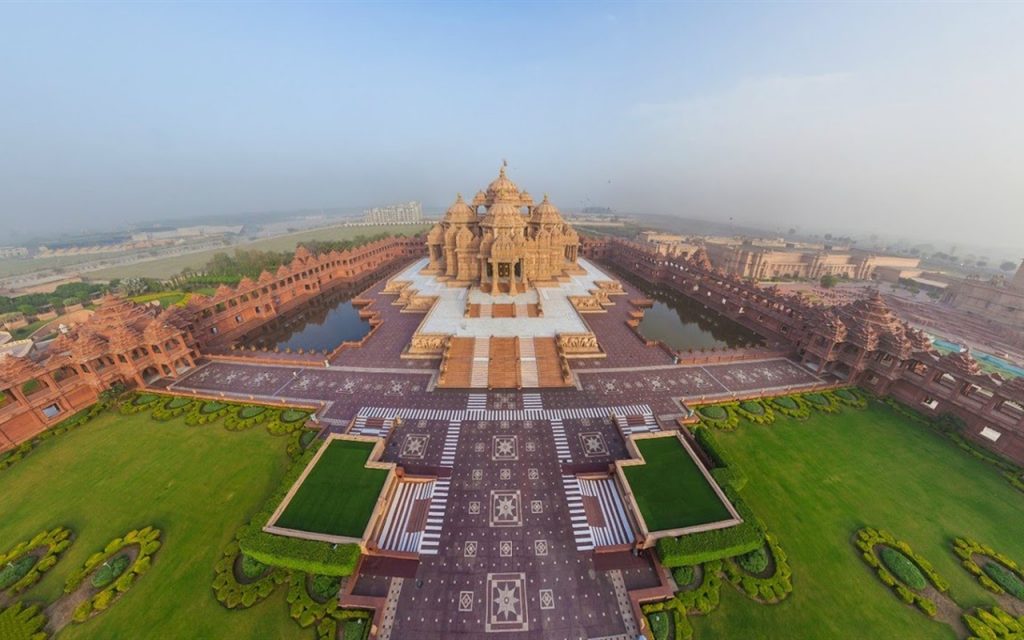
‘Akshardham’ means the divine abode of God. It is hailed as an eternal place of devotion, purity and peace. Swaminarayan Akshardham at New Delhi is a Mandir – an abode of God, a Hindu house of worship, and a spiritual and cultural campus dedicated to devotion, learning and harmony. Timeless Hindu spiritual messages, vibrant devotional traditions and ancient architecture all are echoed in its art and architecture.The mandir is a humble tribute to Bhagwan Swaminarayan (1781- 1830), the avatars, devas and great sages of Hinduism. The traditionally-styled complex was inaugurated on 6 November 2005 with the blessings of HH Pramukh Swami Maharaj and through the devoted efforts of skilled artisans and volunteers.
SPIRITUAL SIGNIFICANCE
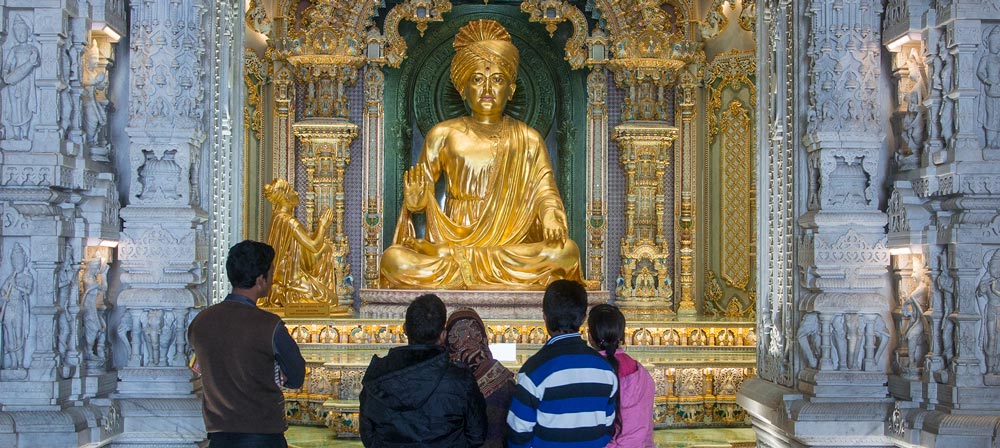
Bhagwan Swaminarayan
The inner sanctum or garbhagruh of the Akshardham mandir is home to Bhagwan Swaminarayan and his divine succession of gurus – Gunatitanand Swami, Bhagatji Maharaj, Shastriji Maharaj, Yogiji Maharaj, and Pramukh Swami Maharaj.
Each element of Akshardham echoes with spirituality – the Mandir, the Exhibitions and even the Gardens.
The Akshardham mandir has over two hundred murtis, representing many of the spiritual stalwarts over many millennia. The spiritual premise of Akshardham is that each soul is potentially divine. Whether we are serving the family, the country our neighbors or all living beings the world over , each service can help one move towards divinity. Each prayer is a call towards improving oneself and moving closer to God.
A visit to Akshardham is a spiritually enriching experience. Whether it is in realising the power of prayer, in feeling the strength of non-violence, in being aware of the universal nature of Hinduism’s ancient principles, or just in admiring the beauty of God’s abode on Earth –- each element has a spiritual significance.
FACTS AND FIGURES
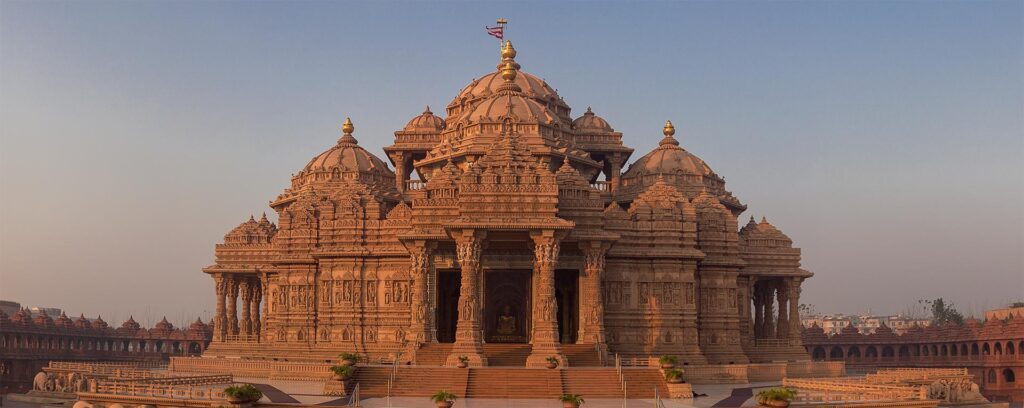
- Opened 6th November 2005
- Constructed by Bochasanwasi Shri Akshar Purushottam Swaminarayan Sanstha (BAPS)
- Inspired by HH Yogiji Maharaj (1892-1971 CE)
- Created by His Holiness Pramukh Swami Maharaj
- More than 300,000,000 volunteer hours went into making the complex
- Over 8,000 volunteers from across the world participated in building it
- Mandir built from intricately carved sandstone and marble
- Exhibitions on Hinduism, including Bhagwan Swaminarayan’s life and teachings such as prayer, compassion, and non-violence.
- Open gardens, water bodies and step-well styled courtyard
Akshardham Temple in Delhi offers a transformative experience through stunning architecture, spiritual ambiance, cultural exhibits, and a tranquil garden, symbolizing harmony and unity among visitors of all backgrounds. The Akshardham Temple in Delhi is a great example of human art.
Rules of akshardham temple
The following guidelines apply:
- ✅ Upper Wear: Must cover shoulders, chest, back, and upper arms. ❌ No sleeveless, tank tops, or low-cut tops.
- ✅ Lower Wear: Must extend below the knees. …
- Sarongs are available for purchase at ₹100 if needed to maintain the Mandir’s sacred environment.
Gurdwara Bangla Sahib
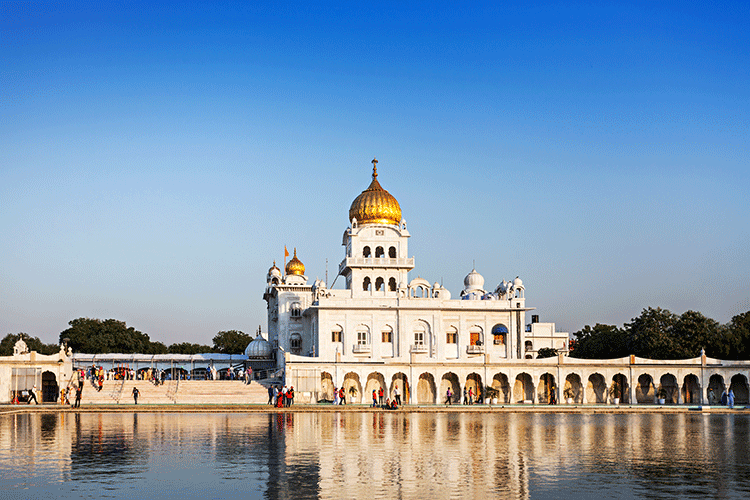
A Place of Peace and Service:Bangla Sahib
Gurudwara Bangla Sahib, situated in the heart of New Delhi, stands as a symbol of spiritual devotion and selfless service. This sacred Sikh shrine is not only a place of worship but also a symbol of Sikh values, history, and heritage.
The history of Gurdwara Bangla Sahib dates back to the 17th century. It was originally a bungalow (or “Bangla” in Hindi) owned by Raja Jai Singh, a Moghal noble during the reign of Emperor Aurangzeb.
The eighth Sikh Guru, Guru Har Krishan Ji, stayed at this bungalow in 1664 during his visit to DelhiDuring this visit of Guru Sahib the people of Delhi were suffering from smallpox epidemic. Guru Sahib out of love and compassion for suffering humanity dipped his holy feet in water and poured charan amrit into a small chaubacha (tank). All those who drank the water were cured from the disease and thus the people of Delhi were saved from the deadly epidemic . His selfless service and healing presence earned him the admiration of the locals.
In honor of Guru Har Krishan Ji’s visit and service, Raja Jai Singh donated a bungalow to the Sikh community and thus the foundation of Gurdwara Bangla Sahib was laid and it became a place of worship and service .
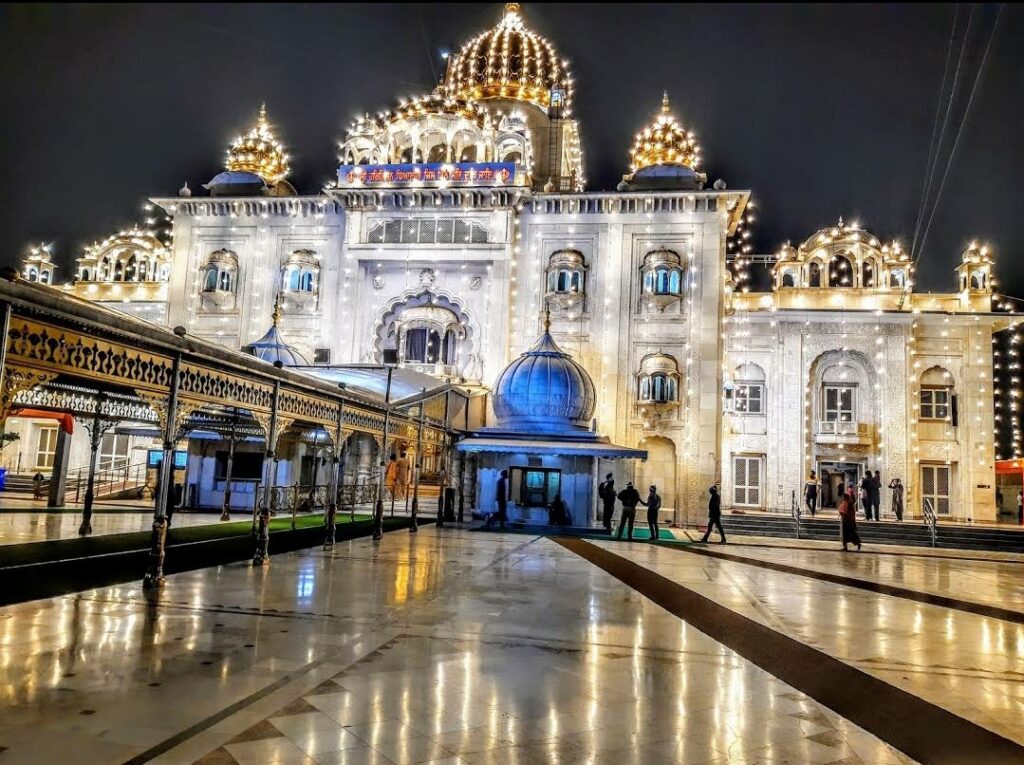
Sarovar Sahib
At the heart of Gurudwara Bangla Sahib is the Sarovar, a sacred pool of water that symbolizes purity and spiritual purification . Devotees visit the Sarovar to participate in the ancient tradition of isnan, or purification, which is believed to purify the soul and renew the spiritual journey . Amidst the tall buildings of New Delhi, the Sarovar (sacred pool) stands out, reminding us of the lasting significance of Sikh spirituality
Langar
The langar of Gurudwara Bangla Sahib is the epitome of the Sikh principle of selfless service. It operates 24 hours a day and offers free meals to anyone who walks in, regardless of background. This practice instills humility, equality and a sense of community in all who participate in the Langar. This practice not only addresses hunger but also reflects the spirit of unity and equality.
Architecture
The architecture of Gurdwara Bangla Sahib in Delhi is a blend of both traditional and contemporary elements, reflecting the rich Sikh heritage and the demands of modern urban life.One of the most iconic features of the gurdwara is its stunning golden dome, which can be seen from a distance. This dome symbolizes the spiritual and divine aspect of the gurdwara.
Gurdwara Bangla Sahib has a large sarovar (sacred pool) in its complex, which is a central element of Sikh gurdwara architecture.The main prayer hall of Gurdwara Bangla Sahib is a spacious and peaceful area where Sikh religious ceremonies, including kirtan (devotional singing) and the reading of Guru Granth Sahib (the Sikh holy scripture), take place.
Spiritual Events & Celebrations
Gurdwara Bangla Sahib, like many other Sikh gurdwaras, hosts various celebrations and events throughout the year. These festivals are an integral part of Sikh religious and cultural life and often attract large congregations of devotees and visitors.
Gurpurabs mark the birth anniversaries of the Sikh Gurus. The Gurpurabs of Guru Nanak Dev Ji, Guru Gobind Singh Ji, Guru Harkrishan ji and other gurus are celebrated with special prayers, kirtan (devotional singing) and readings from the Guru Granth Sahib. Langar is served to all participants.
Nagar Kirtan, which is a religious procession, is also organized on special occasions. It includes the singing of hymns, the carrying of the Guru Granth Sahib in a beautifully decorated palanquin and a lively presentation of Sikh culture and tradition.The ceremony of Amrit Sanchar,which is a significant event, also occurs regularly.
Ugrasen ki Baoli
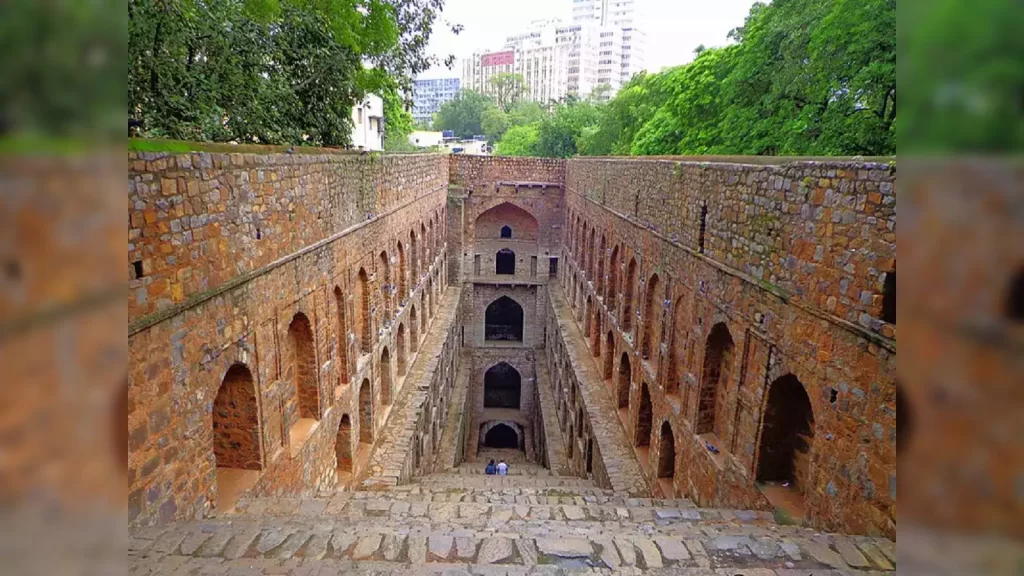
Discover a Hidden Time Warp Bang in the Middle of Modern-Day Delhi
Agrasen ki baoli has a hundred and eight steps to get down to the bottom, so climbing all the way down and up again is quite an exercise. It is best done by taking your time, stopping often to sit on the steps or the side ledges and letting the atmosphere of the place wash over you. If you are the more adventurous type, you could also explore the little slit-like https://www.until.life/wp-admin/post.php?post=124&action=editopenings on the side, which then lead to further narrow passages and ultimately emerge directly onto the upper ledges. This will allow you some really dramatic photos, but could also be potentially dangerous as the ledges have no railings.
As you descend down the steps of the baoli, the very bottom is at least a few degrees cooler than at the top due to the absence of direct sunlight. In the cold winter weather, which is when I visited, this may not have been much of an advantage. But, I could well imagine the draw of the baoli in the searing summers, when the coolness of these lower floors would be a very welcome respite.
A small tunnel, about waist high, runs through the back wall of the baoli to the other side. As it was well past the rainy season, the bottom of the baoli was dry, and this tunnel both visible and accessible. A few daredevil school kids, obviously with a strong sense of discovery, had crouched their way through this passage to emerge on the other side. I could hear their excited voices echoing off the stonewalls.
You could do the same. Crouching to enter the tunnel, you will need to walk about ten paces through the damp passageway to come out on the other side. You will emerge at the bottom of a circular well shaft, the walls paved with solid stone slabs. And, if you look up, you can notice that the very top of the well has been fenced off with a wire net, probably for safety.
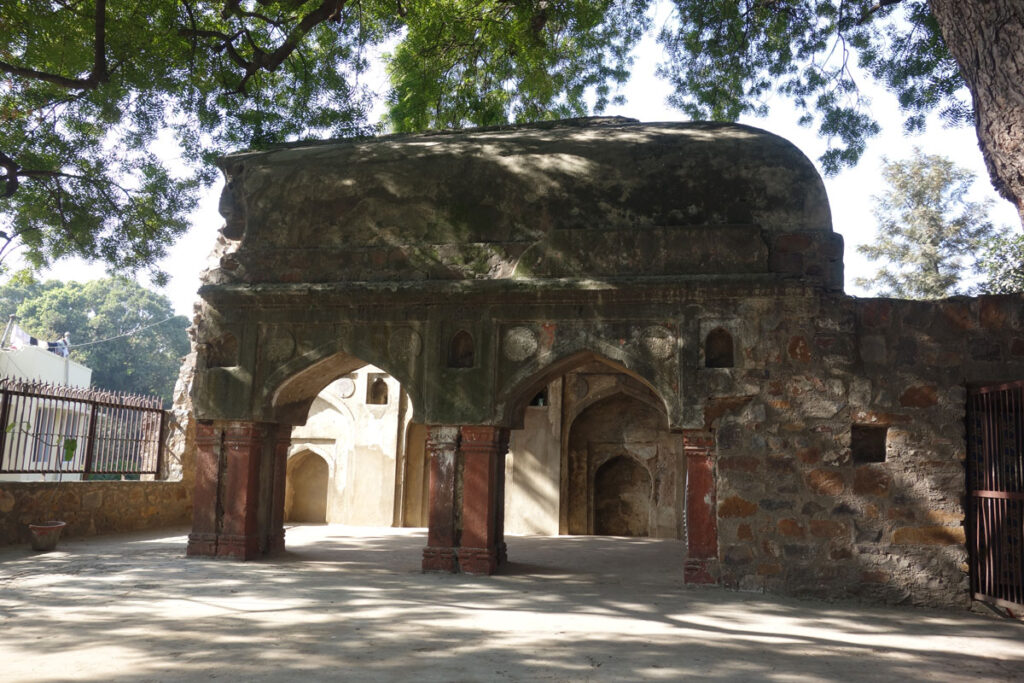
A Half-Broken Mosque with Unusual Features, near the Entry Gate to the Baoli
This particular mosque has two unusual traits that you can look out for. One is its whale back roof – which is a roof with slightly arched slopes – that is highly unusual for a mosque. And, the second is its unique red-colored pillars, which, if you look closely at the bottom, are carved with Buddhist motifs at the base.
Raja Agrasen and the Kingdom of Agroha
Agrasen Ki Baoli is said to have been built by Raja Agrasen, the famous forefather of the prosperous Agrawal community. But – judging by the style of its architecture – this baoli was probably repaired during the Tughlaq or Lodi eras, in the 14th or 15th century.
Raja Agrasen was the king of Agroha, a city of traders, from whom the prosperous Agrawal community claims descent. The Agroha kingdom was not far from Delhi, close to modern-day Hisar. Legend has it that a hundred thousand traders lived in Agroha during its heyday. Any immigrant wanting to settle in the city would be given a brick and a rupee by each inhabitant, providing him a hundred thousand bricks to build himself a house and a hundred thousand rupees to start his new business.
Over time, the residents of Agroha spread out all over India as the Agrawal community, an influential and respected community who are well recognized for their commercial skills.
Delhi’s Magical Baolis
Baolis, or stepwells, is an architecture that is entirely unique to India.
These baolis were usually built by kings, nobles or rich merchants for public use. They served mainly the more arid parts of India, where water management was important due to the seasonal fluctuations in rain. Many of these old baolis can still be seen today in Delhi, Rajasthan, Gujarat and even Pakistan.
Apart from being used for water, baolis were important centres for social gatherings and religious ceremonies. Women were its main users, as it was they who collected water and prayed to the local Gods for blessings. This is why so many baolis have places of worship attached to them. And in fact, it could well be the reason for their continued existence and survival.
Apart from being used for water, baolis were important centres for social gatherings and religious ceremonies. Women were its main users, as it was they who collected water and prayed to the local Gods for blessings. This is why so many baolis have places of worship attached to them. And in fact, it could well be the reason for their continued existence and survival.
National Museum, New Delhi
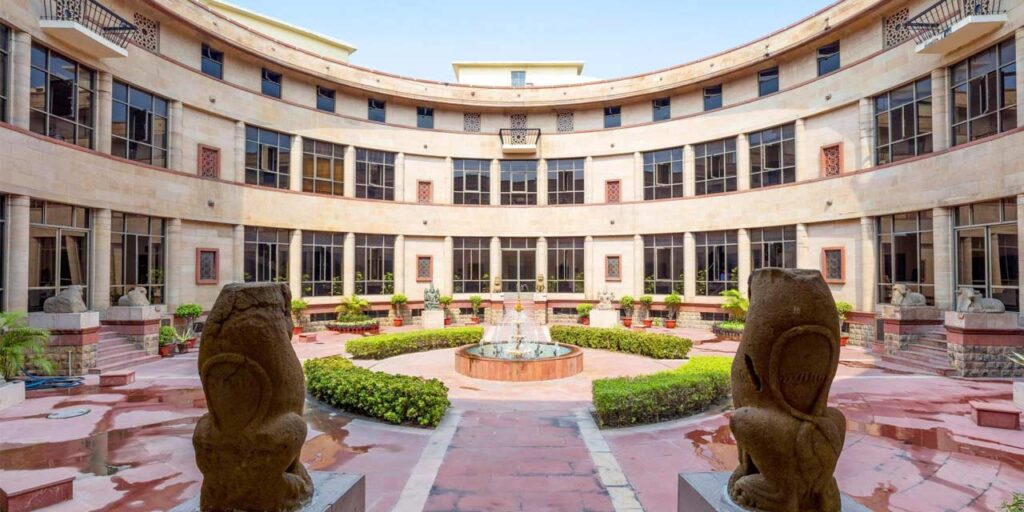
The National Museum in New Delhi, also known as the National Museum of India, is one of the largest museums in India. Established in 1949, it holds a variety of articles ranging from the pre-historic era to modern works of art. It functions under the Ministry of Culture, Government of India.
The National Museum, located on Janpath Road, is one of the largest and most prestigious museums in India. Established in 1949, it is home to a vast and diverse collection of art, artifacts, and antiquities that span over 5,000 years of Indian history.
Highlights of the Collection
The museum houses over 2,00,000 objects. Key galleries include:
- Harappan Civilization Gallery – Artifacts from Indus Valley, including the famous Dancing Girl bronze statue.
- Maurya to Gupta Period – Buddhist sculptures and relics.
- Manuscripts Gallery – Ancient handwritten texts on palm leaves and paper.
- Miniature Paintings – Rajasthani, Mughal, Pahari schools of art.
- Decorative Arts – Weapons, jewelry, textiles, and more.
- Central Asian Antiquities – Items brought by Sir Aurel Stein during his expeditions.
🧑🏫 Educational Activities
- Guided tours (audio and group)
- Temporary exhibitions
- Workshops, lectures, and children’s programs
The four-story building has a rectangular plan and layout oriented with its line of symmetry in an east-west axis, longitude in a north-south axis, and its main entrances on the east and the west.
The National Museum of Natural History houses 12 permanent galleries that exhibit the rich biological and geological diversity of the Philippines. It includes creatively curated displays of botanical, zoological, and geological specimens that represent our unique natural history
The Louvre exhibits sculptures, objets d’art, paintings, drawings, and archaeological finds. At any given point in time, approximately 38,000 objects from prehistory to the 21st century are being exhibited over an area of 72,735 m2 (782,910 sq ft), making it the largest museum in the world.
Art museums contain collections of paintings, sculptures, and other important works of art. Some art museums’ collections cover many different styles and periods of history. Others specialize in artworks from a particular time period or a single art style, such as modern art. scientific subjects.
The building was constructed as the Agriculture and Commerce Building in 1940. It was designed in the Neoclassical style by Filipino architect Antonio Toledo in the late 1930s, having the same dimensions and floor plan as its twin building located at the side of the circle, the Finance Building.
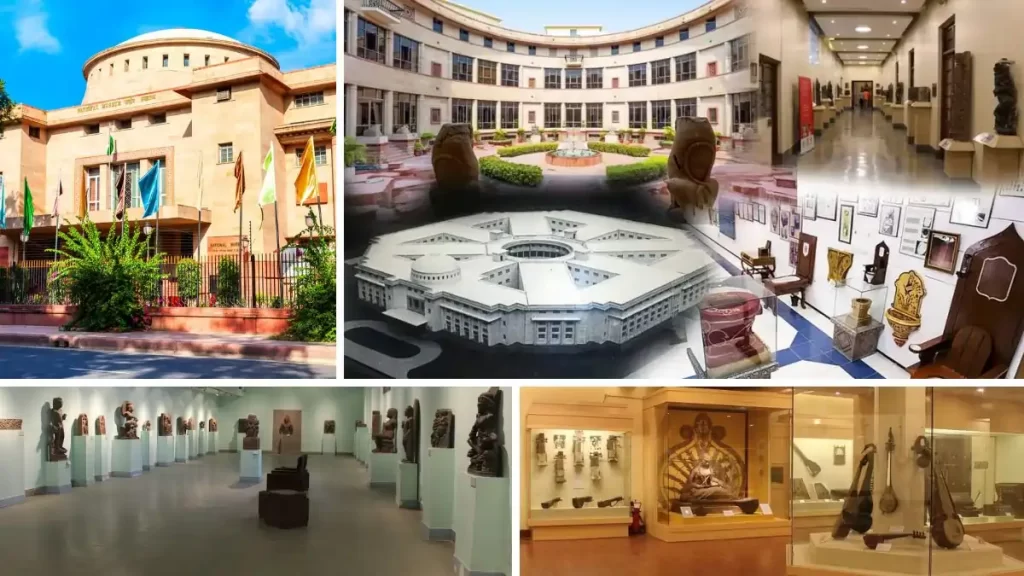
The arts have been classified into seven forms: painting, architecture, sculpture, literature, music, theatre, and filmmaking. Some arts may be derived from others; for example, drama is literature with acting, dance is music expressed through motion, and songs are music with literature and human voice.
The museums role is to to prevent further deterioration of the artifact after it is acquired. The museum also researches on how the artefact was made and how to conserve it in the future. Research And Publication- The main objective of a museum as a research and documentation centre is to know its collections.
A museum is an institution dedicated to displaying or preserving culturally or scientifically significant objects. Many museums have exhibitions of these objects on public display, and some have private collections that are used by researchers and specialists.
The Museum presently holds approximately 2,00,000 objects of diverse nature, both Indian as well as foreign, and its holdings cover a time span of more than five thousand years of Indian cultural heritage.
an institution devoted to the procurement, care, study, and display of objects of lasting interest or value. American Museum of Natural History. also : a place where objects are exhibited. an art museum
A museum curator is responsible for ensuring that these artifacts are handled and displayed in a way that keeps them safe. They oversee the item’s documentation, conduct research on the collection, and find the right packaging for items whenever they have to be transported.
Rajghat Memorial
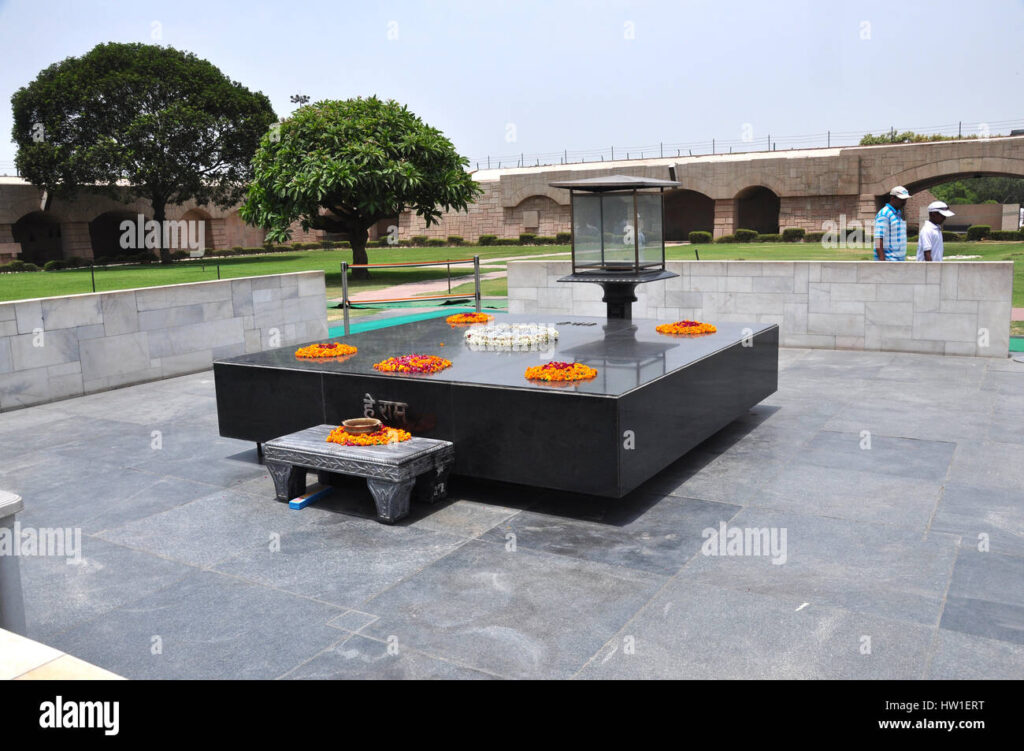
Raj Ghat is a memorial complex in Delhi, India. The first memorial was dedicated to Mahatma Gandhi where a black marble platform was raised to mark the spot of his cremation on 31 January 1948 and consists of an eternal flame at one end. Located on Delhi’s Ring Road, a stone footpath leads to the walled enclosure that houses the memorial. Later the memorial complex was expanded to include memorials for other prominent Indian leaders including Charan Singh, Jawaharlal Nehru, Lal Bahadur Shastri, Indira Gandhi, Rajiv Gandhi, Chandra Shekhar and Atal Bihari Vajpayee.
Raj Ghat is the final resting place of Indian politician Mahatma Gandhi, one of the most respected leaders of all times. On 31 January 1948, Gandhi was cremated on the bank of the holy Yamuna River and his ashes buried. Shortly afterwards a monument was built here which is open to visitors.
Raj Ghat stands as an elegant, solemn and austere tribute to Mahatma Gandhi – India’s revered Father of the Nation and one of the most iconic figures in the Indian history. When one approaches this memorial, all sense of bustling Delhi vanishes into reverent silence as one approaches a peaceful space surrounded by lush gardens, exuding an air of simplicity and austerity that befits him and his life’s work.
Raj Ghat in Delhi is a serene and elegant memorial dedicated to the father of the nation, Mahatma Gandhi. Just like Gandhiji who was a simple yet powerful leader, his memorial also reflects simplicity in its structure and design. Located on the banks of the River Yamuna, Raj Ghat marks the spot where he was cremated after the assassination. In addition to this, the Raj Ghat area also contains the cremation spots aka samadhis of several other famous leaders in the country. Whether you are a history buff or a backpacker, it counts among the prime attractions to explore once you step out of your hotels in Delhi for a sightseeing trip.
Mohandas Karamchand Gandhi, also known as Mahatma Gandhi, was assassinated on 30th January 1948 and the following day, his body was cremated at a spot near the Yamuna. Raj Ghat marks the exact location where Gandhiji was consigned to flames and his last rites were performed. A simple memorial was built at this place in keeping with Gandhiji’s philosophy and practice of living a modest life.
Originally, Raj Ghat Gate was the name of an old gate that existed in the walled city of Delhi called Shahjahanabad. It opened on the west bank of the River Yamuna at a place called Raj Ghat. Later, the area where the memorial for Gandhiji was built came to be referred to as Raj Ghat.
Over the years, the samadhis of many notable Indian leaders were constructed in the Raj Ghat area, including former Presidents and Prime Ministers of the country. Rashtriya Smriti Sthal, the samadhi of Atal Bihari Vajpayee constructed in 2018 is the latest addition to the Raj Ghat area
Gandhiji’s memorial at Raj Ghat is a square platform made using black marble. The plain structure has the words ‘Hey Ram’ inscribed on it since these were the last words uttered by the assassinated leader. On top of the marble platform, an eternal flame enclosed in a glass frame burns ceaselessly, all through the day and night. The memorial was designed by Vanu G. Bhuta in keeping with Gandhiji’s policy of simple living and high thinking.
There is also a beautiful garden surrounding the memorial. The garden has a number of labeled trees that have been planted by noted dignitaries from around the world, including Queen Elizabeth II, Vietnamese leader Ho Chi Minh, USA President Dwight D. Eisenhower, and several others.
The National Gandhi Museum or Gandhi Memorial Museum at Raj Ghat celebrates the life and ideology of Mahatma Gandhi through a collection of pictures, sculptures, books, films, and other memorabilia related to Gandhiji’s life. The museum has a rich collection of more than 35,000 documents and books related to Gandhiji’s life and works, some of which have been written by the leader himself. It also exhibits 23 models of charkhas or spinning wheels along with some of his personal items, such as his dhoti, shawl, walking sticks, a few of his teeth, and even one of the bullets that were used to assassinate him.
There is an audio-visual section at the museum where films on Gandhiji’s life and work are shown inside an auditorium of 75 seats.
Memorials in the Vicinity of Raj Ghat, Delhi
- Vijay Ghat (Lal Bahadur Shastri)
- Shantivan (Pandit Jawahar Lal Nehru)
- Shakti Sthal (Indira Gandhi)
- Veer Bhoomi (Rajiv Gandhi)
- Karma Bhumi (Shankar Dayal Sharma)
- Rashtriya Smriti Sthal (Atal Bihari Vajpayee)
Shri Laxmi Narayan Temple (Birla Mandir)

Laxminarayan Temple or Birla Temple, New Delhi, India.
India has been a country of all major religious believes since its past. Almost all the religions have its specific places of worship and prayers. Temple is one of such religious places where Hindus go to worship and pray frequently. There are numbers of famous temples in India. The Laxminarayan temple of Delhi is one of them.
Laxminarayan Temple is also known as Sri Laxmi Narayan Mandir, Birla Temple and Birla Mandir. The Laxminarayan temple was the biggest and the most beautiful Hindu temple in Delhi until completion of the Akshardham Temple on the bank of river Yamuna in 2005. The Laxminarayan Temple built in 20th century is one of the most visited temples of Delhi by local devotees and tourists from all over India and abroad.
During the festivals of Janmashtami and Diwali, Laxminarayan temple turns into a major attracting center, visited by large numbers of devotees.
The Laxminarayan Temple was the first biggest temple covering an area of 3 hectares (7.5 acres) including a park with sculptures. This is located near Connaught Place, New Delhi, in India. The main temple building has 3 floors from its base, accommodating the shrines of idols on its high plinth of first floor. The highest shikhara (peak) of the temple above the sanctum sanctorum is 49 meter (160 feet) high. This temple is one of major tourist attraction of Delhi.
Who built Laxminarayan Temple of Delhi:
The Laxminarayan Temple was funded and built by an industrialist and his son. His name was Baldeo Das Birla and his son was Jugal Kishore Birla. B. D. Birla was a rich industrialist and he was a friend of Mahatma Gandhi. In fact, Mahatma Gandhi suggested him to build temples in different Indian cities, accessible to all castes.
The Laxminarayan Temple was first of its series to start from Delhi. Since this temple was supported by Birla, it is also famous as “Birla Temple” Delhi
Sris Chandra Chatterjee was the architect of Lakshminarayan Temple. He invited and employed around one hundred skilled artisans from Benares city to build and carve the temple. The Laxminarayan Temple is in northern or “Nagara Style of temple architecture”. The Nagara Style of temple architecture was mostly used during 5th and 6th century AD in India.
The foundation stone of the temple was laid by Jat Maharaja Udaybhanu Singh in 1933. The carvings and icons of temple were carried on under the guidance of Acharya Bishvanath Shastri. Some of the walls inside the temple are adorned with carvings depicting scenes from religious text of Hindus from Ramayana and Mahabharata.
On the exterior, the garbhagriha (central shrine) is crowned by a tower-like shikhara (peak). On the outer wall of temple, you can see many carvings including the symbol of “Swastika”. Many foreign tourists get confused with Hitler’s Nazi symbol, used on his flag. Hitler defamed swastika using a sign, as same as swastika.
The Laxminarayan temple was inaugurated by Mahatma Gandhi. Mahatma Gandhi was well aware of the Indian society. There were practices of caste system within Hindus, in which people of lower social strata of the same were believed to be impure. And they were discriminated in society, and they were not permitted to enter in a temple.
This temple is dedicated to Laxmi Devi (goddess of prosperity) and Narayan Bhagwan (the preserver), their idols are housed in central shrine of temple thus, called LaxmiNarayan Mandir. Apart from idols of LaxmiNarayan, the Darshana or a view of other famous Hindu gods and goddesses can be taken here in this temple.
The statues (Murtis) of gods and goddesses like Durga Devi, Shankar or Shiva Bhagwan, Devi Parvati, Krishna Bhagwan, Shri Rama, Sita Devi, Laxmana Ji, Hanuman Ji and Bhagwan Ganesha, are other beautiful attractions of the temple. All these idols are beautifully carved out into white marble brought from the state of Rajasthan.
The Laxminarayan temple houses a Geeta Bhawan Hall, where religious discourse is organized from time to time. The Geeta Bhawan is located in northern part of the temple and it is dedicated to Krishna.